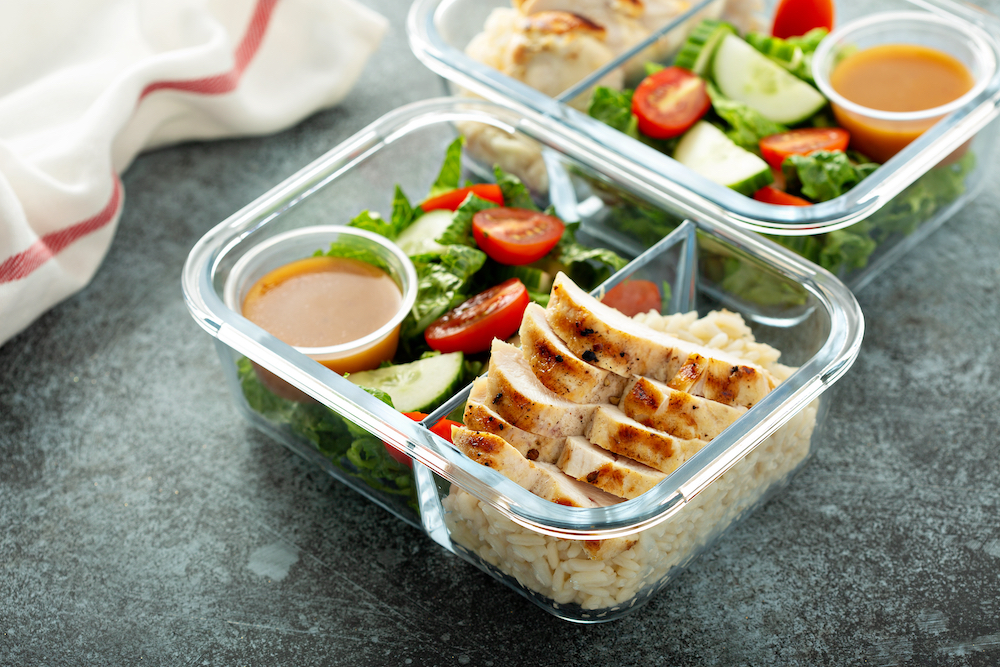So you or your loved one want to eat healthier. Great! That’s the first half of the battle – having the right motivation. Now, the second half of it is mostly having the right knowledge about what healthy eating really means. So let’s talk about that.
Make healthy eating easy in Palm Springs senior living. Get in touch with us for more information.
What Is Healthy Eating?
The definition of healthy eating tends to adjust as a person gets older. For instance, as you age, your metabolism will get slower, which means that you need to consume fewer calories than you used to. Your body will also need to get more of certain nutrients. So, picking foods with the best nutrient value will be paramount.
Eating healthy meals and staying active will allow you to experience healthy aging. Use our guide here to understand the ways that you can age healthily and follow a healthy diet plan.
Fulfilling Health Requirements for Seniors
Simple changes can help a lot in creating healthy eating patterns. Choosing Palm Springs senior living is also a great way to easily form healthy eating habits.
See the following tips for getting as much out of your diet as possible while at the same time getting all the nutrition you need (thus lowering your risk of diseases).
1.) Consume food from the various food groups to lower your risk of getting diseases like heart disease, high blood pressure, and diabetes. Opt for foods that have barely any or no sodium, added sugars, or saturated fat.
2.) Get more protein. Studies show that elderly people should consume more protein compared to younger adults. Unfortunately, most seniors don’t get enough protein in their diets. Proteins are the building blocks of life. They are the main component of the cells in your body. So, getting more protein will help you gain strength, boost your physical capabilities, and help you attain leaner muscles, as protein will build, repair, and maintain your tissues. If you want to get enough protein and stay muscular, you can add lean meats (such as lean beef), chicken, eggs, tofu, seafood (especially white fish), lentils/peas/beans, fortified soy produce, or dairy to your diet.
3.) Get your whole grains. Besides bread, you can also get these from whole wheat pasta and brown rice.
4.) Include veggies and fruits in your diet. These superfoods are low in salt, sugar, fat, and calories. It’s essential to eat enough of these foods to maintain your health and reduce the risk of chronic disease. In fact, for a healthy diet overall, veggies and fruits are both required – just eating one or the other isn’t sufficient as your body needs both food groups for the nutrients they provide. Keep an eye out for precut ones if chopping and slicing are too difficult. Try to get a good mix of purple, orange, green, and red.
5.) Eat foods that have extra vitamin B12. Certain cereals have extra of this vitamin. You could also consult with your doctor about getting B12 supplements.
6.) Lower your sodium consumption. A good way to do this is to season your food with spices and herbs, and even lemon juice.
7.) Pick high fiber foods and keep an eye out for Vitamin D, which is an essential mineral as we get older.
8.) Keep hydrated throughout your day to help digest food and absorb nutrients. Stay away from sugary drinks like non-diet soda.
9.) To stay at a healthy weight, you need to consume the proper quantity of food for your body type and age. The American Heart Association has information about recommended servings for adults above 60.
10.) Seek help online: It’s not always easy to stick with a healthy diet. However, there is plenty of advice online about overcoming common roadblocks, as well as specific tips to help you out.

Planning Meals
The question of “what should I eat” shouldn’t make you flustered and upset. And at Palm Springs senior living, it won’t. When you are equipped with the right knowledge and motivation, you’ll feel good about what you eat. Here are some tips for planning healthy and delicious meals:
1.) Knowledge: to better plan your meals, you should understand what a plate of healthy food looks like, to begin with. You may recall the food pyramid. However, the USDA recently announced a new and easier way for people to understand what they should eat every day. It’s the MyPlate. This easy-to-view image gives a visual representation of what a healthy food plate could look like: 5 different food groups on your plate.
2.) Advance planning: when you plan each meal, you remove any guessing about what to eat. That way, you won’t fall back on eating fast food/unhealthy snacks. In addition, you’ll easily be able to fulfill your daily nutrient needs.
3.) Become familiar with affordable foods. There are both healthy and budget-friendly foods out there. Make a grocery list ahead of time so that you can follow your budget. Check out the SNAP-friendly recipes out there. SNAP is the Supplemental Nutrition Assistance Program. It can help you afford healthier food whenever you need it. More than four million older Americans have used SNAP to purchase food. The average senior gets $113 a month’s worth of healthy food from this program.
4.) Think about preparation time: certain meals can be made very quickly, in less than 5 minutes. If you love to cook or need to make a meal for your family or friends, you might need to be able to make a meal quickly.
5.) Consider calories: how many calories you need every day will depend on your unique needs. Factors to consider are your weight and what your goals are in terms of fitness. Discuss these things with your doctor before adopting a new diet or fitness plan.
6.) Read nutrition labels: the most healthy foods are whole foods. Oftentimes these are found on the perimeter of grocery stores. Check the dairy, produce, and meat sections of the supermarket. If you want to get packaged foods, do so intelligently! Look at the labels to know if they are low in fat, sodium, and sugar.
7.) Making a shopping list: remember to get fresh veggies, whole-grain bread, and fruits.






